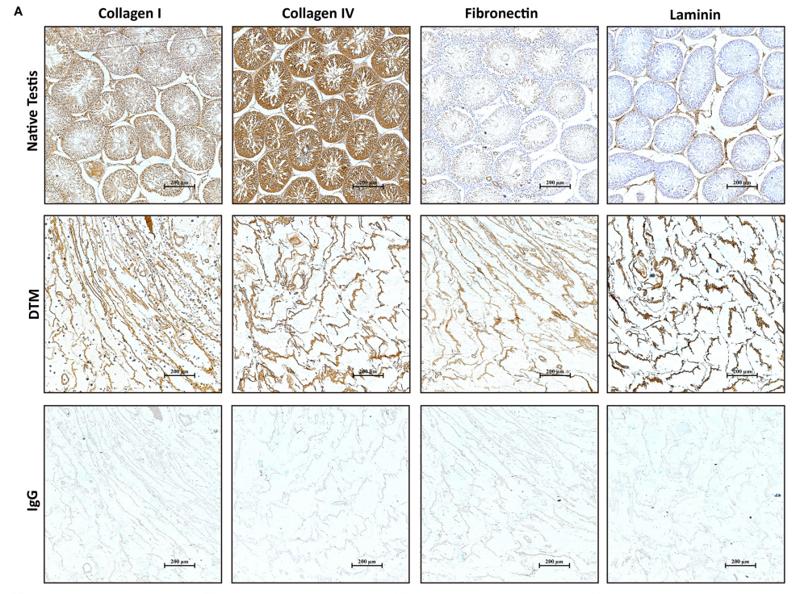| 产品: | 磷酸化 LRP6 (Ser1490) 抗体 |
| 货号: | AF8344 |
| 描述: | Rabbit polyclonal antibody to Phospho-LRP6 (Ser1490) |
| 应用: | WB |
| 文献验证: | WB |
| 反应: | Human, Mouse |
| 预测: | Pig, Zebrafish, Bovine, Horse, Sheep, Rabbit, Dog, Chicken |
| 分子量: | 180kDa; 180kD(Calculated). |
| 蛋白号: | O75581 |
| RRID: | AB_2840406 |
产品描述
*The optimal dilutions should be determined by the end user.
*Tips:
WB: 适用于变性蛋白样本的免疫印迹检测. IHC: 适用于组织样本的石蜡(IHC-p)或冰冻(IHC-f)切片样本的免疫组化/荧光检测. IF/ICC: 适用于细胞样本的荧光检测. ELISA(peptide): 适用于抗原肽的ELISA检测.
引用格式: Affinity Biosciences Cat# AF8344, RRID:AB_2840406.
展开/折叠
ADCAD2; C030016K15Rik; Cd; FLJ90062; FLJ90421; Low density lipoprotein receptor related protein 6; Low-density lipoprotein receptor-related protein 6; LRP-6; LRP6; LRP6_HUMAN; OTTHUMP00000238979; OTTHUMP00000238980; OTTHUMP00000238982;
抗原和靶标
A synthesized peptide derived from human LRP6 around the phosphorylation site of Ser1490.
- O75581 LRP6_HUMAN:
- Protein BLAST With
- NCBI/
- ExPASy/
- Uniprot
MGAVLRSLLACSFCVLLRAAPLLLYANRRDLRLVDATNGKENATIVVGGLEDAAAVDFVFSHGLIYWSDVSEEAIKRTEFNKTESVQNVVVSGLLSPDGLACDWLGEKLYWTDSETNRIEVSNLDGSLRKVLFWQELDQPRAIALDPSSGFMYWTDWGEVPKIERAGMDGSSRFIIINSEIYWPNGLTLDYEEQKLYWADAKLNFIHKSNLDGTNRQAVVKGSLPHPFALTLFEDILYWTDWSTHSILACNKYTGEGLREIHSDIFSPMDIHAFSQQRQPNATNPCGIDNGGCSHLCLMSPVKPFYQCACPTGVKLLENGKTCKDGATELLLLARRTDLRRISLDTPDFTDIVLQLEDIRHAIAIDYDPVEGYIYWTDDEVRAIRRSFIDGSGSQFVVTAQIAHPDGIAVDWVARNLYWTDTGTDRIEVTRLNGTMRKILISEDLEEPRAIVLDPMVGYMYWTDWGEIPKIERAALDGSDRVVLVNTSLGWPNGLALDYDEGKIYWGDAKTDKIEVMNTDGTGRRVLVEDKIPHIFGFTLLGDYVYWTDWQRRSIERVHKRSAEREVIIDQLPDLMGLKATNVHRVIGSNPCAEENGGCSHLCLYRPQGLRCACPIGFELISDMKTCIVPEAFLLFSRRADIRRISLETNNNNVAIPLTGVKEASALDFDVTDNRIYWTDISLKTISRAFMNGSALEHVVEFGLDYPEGMAVDWLGKNLYWADTGTNRIEVSKLDGQHRQVLVWKDLDSPRALALDPAEGFMYWTEWGGKPKIDRAAMDGSERTTLVPNVGRANGLTIDYAKRRLYWTDLDTNLIESSNMLGLNREVIADDLPHPFGLTQYQDYIYWTDWSRRSIERANKTSGQNRTIIQGHLDYVMDILVFHSSRQSGWNECASSNGHCSHLCLAVPVGGFVCGCPAHYSLNADNRTCSAPTTFLLFSQKSAINRMVIDEQQSPDIILPIHSLRNVRAIDYDPLDKQLYWIDSRQNMIRKAQEDGSQGFTVVVSSVPSQNLEIQPYDLSIDIYSRYIYWTCEATNVINVTRLDGRSVGVVLKGEQDRPRAVVVNPEKGYMYFTNLQERSPKIERAALDGTEREVLFFSGLSKPIALALDSRLGKLFWADSDLRRIESSDLSGANRIVLEDSNILQPVGLTVFENWLYWIDKQQQMIEKIDMTGREGRTKVQARIAQLSDIHAVKELNLQEYRQHPCAQDNGGCSHICLVKGDGTTRCSCPMHLVLLQDELSCGEPPTCSPQQFTCFTGEIDCIPVAWRCDGFTECEDHSDELNCPVCSESQFQCASGQCIDGALRCNGDANCQDKSDEKNCEVLCLIDQFRCANGQCIGKHKKCDHNVDCSDKSDELDCYPTEEPAPQATNTVGSVIGVIVTIFVSGTVYFICQRMLCPRMKGDGETMTNDYVVHGPASVPLGYVPHPSSLSGSLPGMSRGKSMISSLSIMGGSSGPPYDRAHVTGASSSSSSSTKGTYFPAILNPPPSPATERSHYTMEFGYSSNSPSTHRSYSYRPYSYRHFAPPTTPCSTDVCDSDYAPSRRMTSVATAKGYTSDLNYDSEPVPPPPTPRSQYLSAEENYESCPPSPYTERSYSHHLYPPPPSPCTDSS
种属预测
score>80的预测可信度较高,可尝试用于WB检测。*预测模型主要基于免疫原序列比对,结果仅作参考,不作为质保凭据。
High(score>80) Medium(80>score>50) Low(score<50) No confidence
研究背景
Component of the Wnt-Fzd-LRP5-LRP6 complex that triggers beta-catenin signaling through inducing aggregation of receptor-ligand complexes into ribosome-sized signalsomes. Cell-surface coreceptor of Wnt/beta-catenin signaling, which plays a pivotal role in bone formation. The Wnt-induced Fzd/LRP6 coreceptor complex recruits DVL1 polymers to the plasma membrane which, in turn, recruits the AXIN1/GSK3B-complex to the cell surface promoting the formation of signalsomes and inhibiting AXIN1/GSK3-mediated phosphorylation and destruction of beta-catenin. Required for posterior patterning of the epiblast during gastrulation (By similarity).
Dual phosphorylation of cytoplasmic PPPSP motifs sequentially by GSK3 and CK1 is required for AXIN1-binding, and subsequent stabilization and activation of beta-catenin via preventing GSK3-mediated phosphorylation of beta-catenin. Phosphorylated, in vitro, by GRK5/6 within and outside the PPPSP motifs. Phosphorylation at Ser-1490 by CDK14 during G2/M phase leads to regulation of the Wnt signaling pathway during the cell cycle. Phosphorylation by GSK3B is induced by RPSO1 binding and inhibited by DKK1. Phosphorylated, in vitro, by casein kinase I on Thr-1479.
Undergoes gamma-secretase-dependent regulated intramembrane proteolysis (RIP). The extracellular domain is first released by shedding, and then, through the action of gamma-secretase, the intracellular domain (ICD) is released into the cytoplasm where it is free to bind to GSK3B and to activate canonical Wnt signaling.
Palmitoylation on the two sites near the transmembrane domain leads to release of LRP6 from the endoplasmic reticulum.
Mono-ubiquitinated which retains LRP6 in the endoplasmic reticulum. Ubiquitinated by ZNRF3, leading to its degradation by the proteasome.
N-glycosylation is required for cell surface location.
Cell membrane>Single-pass type I membrane protein. Endoplasmic reticulum. Membrane raft.
Note: On Wnt signaling, undergoes a cycle of caveolin- or clathrin-mediated endocytosis and plasma membrane location. Released from the endoplasmic reticulum on palmitoylation. Mono-ubiquitination retains it in the endoplasmic reticulum in the absence of palmitoylation. On Wnt signaling, phosphorylated, aggregates and colocalizes with AXIN1 and GSK3B at the plasma membrane in LRP6-signalsomes. Chaperoned to the plasma membrane by MESD (By similarity).
Widely coexpressed with LRP5 during embryogenesis and in adult tissues.
The YWTD-EGF-like domains 1 and 2 are required for the interaction with Wnt-frizzled complex. The YWTD-EGF-like domains 3 and 4 are required for the interaction with DKK1.
The PPPSP motifs play a central role in signal transduction by being phosphorylated, leading to activate the Wnt signaling pathway.
Belongs to the LDLR family.
研究领域
· Environmental Information Processing > Signal transduction > mTOR signaling pathway. (View pathway)
· Environmental Information Processing > Signal transduction > Wnt signaling pathway. (View pathway)
· Human Diseases > Cancers: Overview > Pathways in cancer. (View pathway)
· Human Diseases > Cancers: Specific types > Breast cancer. (View pathway)
· Human Diseases > Cancers: Specific types > Hepatocellular carcinoma. (View pathway)
· Human Diseases > Cancers: Specific types > Gastric cancer. (View pathway)
文献引用
Application: WB Species: Mice Sample: Mlg and PPF cells
Application: WB Species: mouse Sample: lung
限制条款
产品的规格、报价、验证数据请以官网为准,官网链接:www.affbiotech.com | www.affbiotech.cn(简体中文)| www.affbiotech.jp(日本語)产品的数据信息为Affinity所有,未经授权不得收集Affinity官网数据或资料用于商业用途,对抄袭产品数据的行为我们将保留诉诸法律的权利。
产品相关数据会因产品批次、产品检测情况随时调整,如您已订购该产品,请以订购时随货说明书为准,否则请以官网内容为准,官网内容有改动时恕不另行通知。
Affinity保证所销售产品均经过严格质量检测。如您购买的商品在规定时间内出现问题需要售后时,请您在Affinity官方渠道提交售后申请。产品仅供科学研究使用。不用于诊断和治疗。
产品未经授权不得转售。
Affinity Biosciences将不会对在使用我们的产品时可能发生的专利侵权或其他侵权行为负责。Affinity Biosciences, Affinity Biosciences标志和所有其他商标所有权归Affinity Biosciences LTD.


